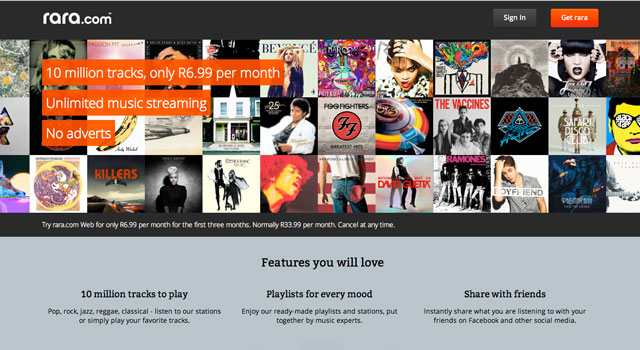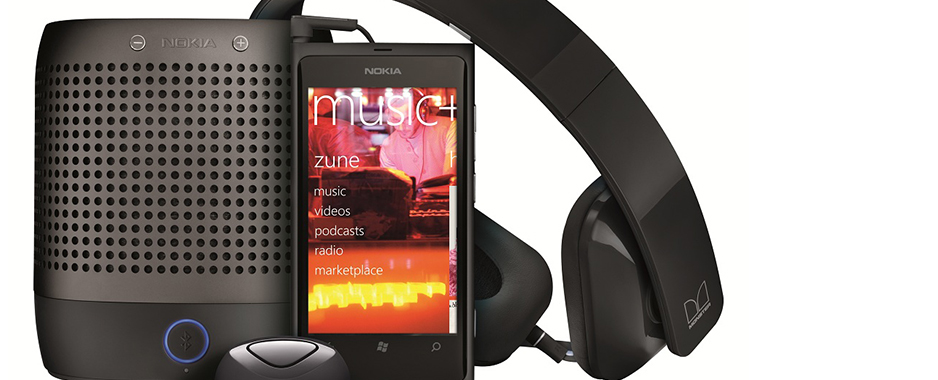
A new music streaming service, rara.com, was launched in SA earlier this week with little fanfare, despite the fact that SA consumers’ options are limited when it comes to such products. The service is competitively priced and stocked and now operates in 27 markets around the world.
The UK-headquartered company offers Web-only subscriptions for R33,99/month (R6,99 for the first three months) and Web and mobile subscriptions for R68,99/month (R13,99 for the first three months). It offers a global catalogue of more than 18m tracks, including a large amount of SA content thanks to deals with all of the major record labels.
This week, the company also announced that it has rolled out applications for Apple’s iOS as well as for Microsoft’s Windows 8 and Windows Phone operating systems. Rara.com already offers an Android app. It doesn’t, however, offer an app for BlackBerry devices, but director Tim Hadley says the company is considering covering additional platforms in future.
The company has staff in the US and Asia in addition to its UK head office and was launched 10 months ago after a year and a half of development and securing licensing deals.
Though there has been little marketing of the service in SA, Hadley says a campaign will follow soon. For now, the company is relying on word of mouth to drive uptake.
“We’ve done a load of additional content deals with independent labels recently,” says Hadley. “We already had the big global labels — Universal, Sony, Warner and EMI — signed up in December last year. Now we’ve struck deals with big independents like Merlin, The Orchard and Believe Digital, which has added an additional 8m tracks to our global catalogue.”
Each market gets a slightly different catalogue with content curated by rara.com’s staff. “Most markets have access to most things, with some tailoring,” Hadley explains. “The SA market may be less interested in K-pop or J-pop but more in local and international repertoire.”
Each region has a dedicated “musicologist” — often a former journalist or deejay — who curates the service for a particular region by creating dedicated playlists and deciding what appears under each genre heading in a given region.

Like most streaming services, rara.com allows users to store content offline, However, this functionality is only available on mobile devices and not on the Web-based desktop version. This is part of the reason the Web-only service is so much cheaper than the combined Web-and-mobile package. “One of the key ways the music industry differentiates between mobile and Web-based experiences is the ability to store music offline,” says Hadley.
Any playlists that are created or favourites that are marked on one platform synchronise to other platforms automatically.
Unfortunately for local independent acts looking to get their music into rara.com’s catalogue, there is no direct submission process. Hadley says the best way for bands to get their music onto the service is to join one of the company’s partners like the independent labels with which it’s done deals, even if only for distribution purposes.
Asked about the pricing and why there is no free trial period, Hadley says rara.com opted not to provide a “freemium” service. Instead, it’s using a business model that has been used “very successfully” in other vertical sectors like paid TV and print publications. “It’s effectively a discounted introductory subscription where everyone who signs up pays from day one but gets a heavily discounted rate from the full retail price that still offers access to the full service.”
The company has also recently concluded a deal with electronics manufacturer Lenovo whereby its applications are preinstalled on the Chinese company’s phones, tablets and PCs.
Hadley says rara.com is also looking at getting the service installed in cars. “We’re looking at the automotive space because we think that’s one of the parts of the consumer experience not being served by the digital music sector at the moment,” he says.
According to Hadley, what sets rara.com apart from its competitors is the user friendliness of its interface and its enormous music discovery functionality. Users can listen to curated stations based on genre, era or mood; curator-created playlists; or they can specify an artist and have a playlist created that includes similar artists.
An additional function called “Just for you” creates custom playlists for users based on items they’ve marked as favourites. Any search also returns artist recommendations based on the search term. — (c) 2012 NewsCentral Media



